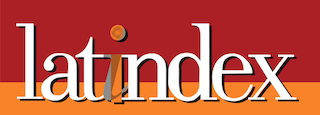Envíos
Lista de comprobación para la preparación de envíos
Como parte del proceso de envío, los autores/as están obligados a comprobar que su envío cumpla todos los elementos que se muestran a continuación. Se devolverán a los autores/as aquellos envíos que no cumplan estas directrices.- El envío no ha sido publicado previamente ni se ha sometido a consideración por ninguna otra revista (o se ha proporcionado una explicación al respecto en los Comentarios al editor/a).
- El archivo de envío está en formato OpenOffice, Microsoft Word, RTF o WordPerfect.
- Siempre que sea posible, se proporcionan direcciones URL para las referencias.
- El texto tiene interlineado sencillo; 12 puntos de tamaño de fuente; se utiliza cursiva en lugar de subrayado (excepto en las direcciones URL); y todas las ilustraciones, figuras y tablas se encuentran colocadas en los lugares del texto apropiados, en vez de al final.
- El texto se adhiere a los requisitos estilísticos y bibliográficos resumidos en las Directrices del autor/a, que aparecen en Acerca de la revista.
Doutrina
Na Doutrina inserem-se os artigos doutrinais submetidos e aceites através do processo de dupla revisão científica e anónima (“double-blind peer review”).
The Articles section includes doctrinal articles submitted and accepted through the double-blind peer review process.
Recensões
Nas Recensões são apresentadas análises a obras jurídicas, nacionais ou internacionais.
The Reviews section includes analysis presented to national or international legal works.
Vária
Na secção Varia podem publicar-se tanto anotações jurisprudenciais, como outras contribuições que, pelo seu interesse jurídico, sejam julgadas relevantes.
The Varia section may publish both case-law notes and other contributions which, for their legal interest, may be deemed relevant.
Aviso de derechos de autor/a
Direitos de Autor (c) 2024 - Revista de direito da ULP

This work is licensed under a Creative Commons Attribution-NonCommercial 4.0 International License.
Declaración de privacidad
Los nombres y las direcciones de correo electrónico introducidos en esta revista se usarán exclusivamente para los fines establecidos en ella y no se proporcionarán a terceros o para su uso con otros fines.






